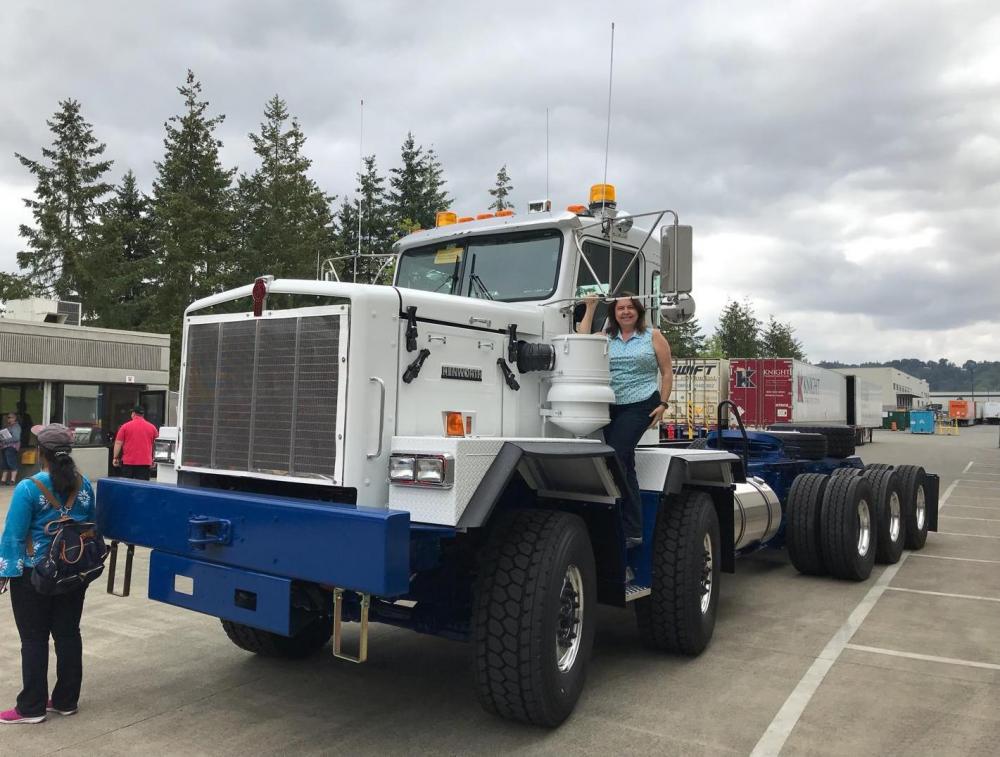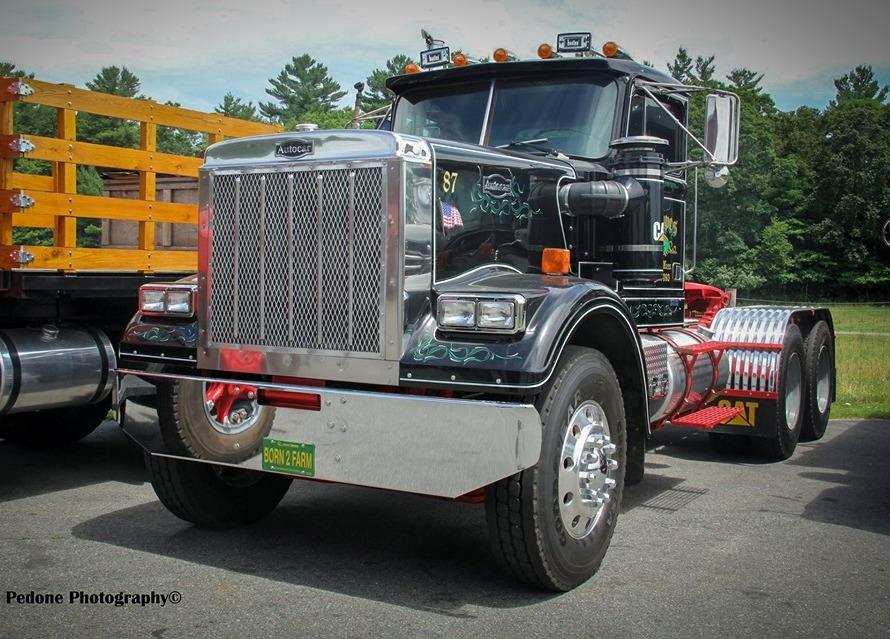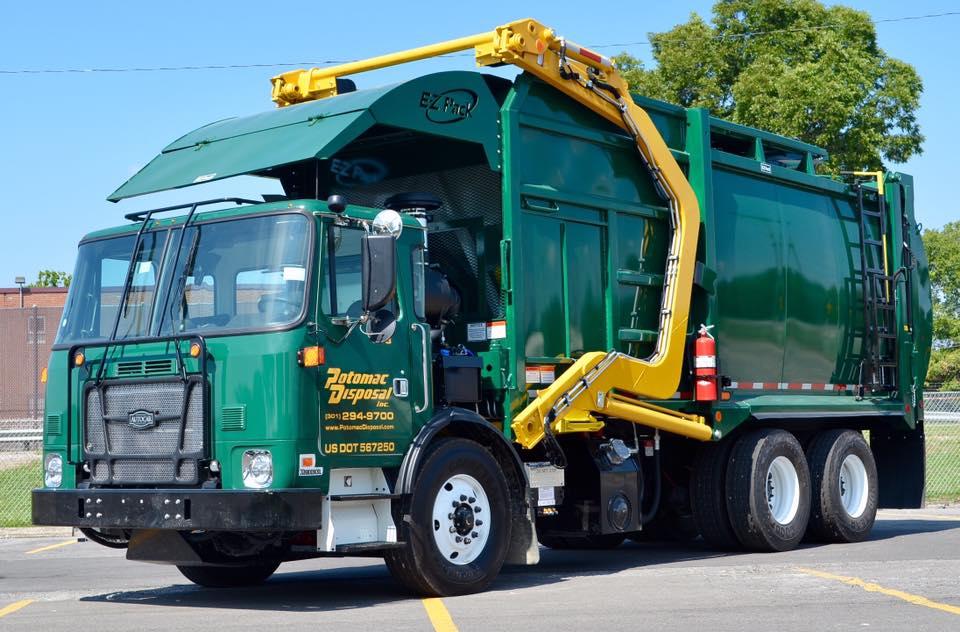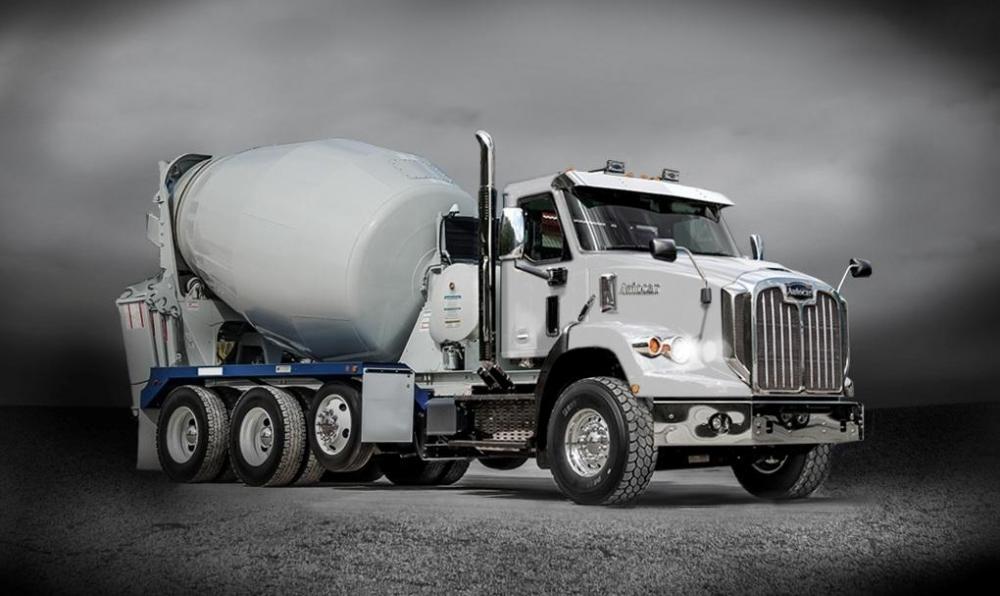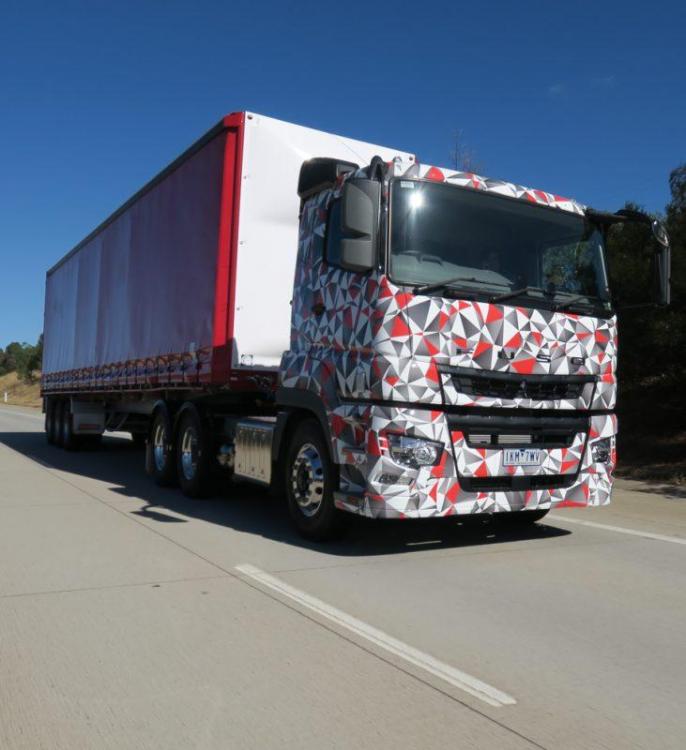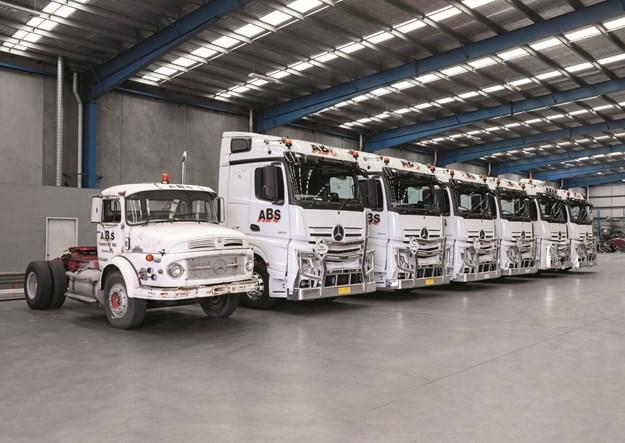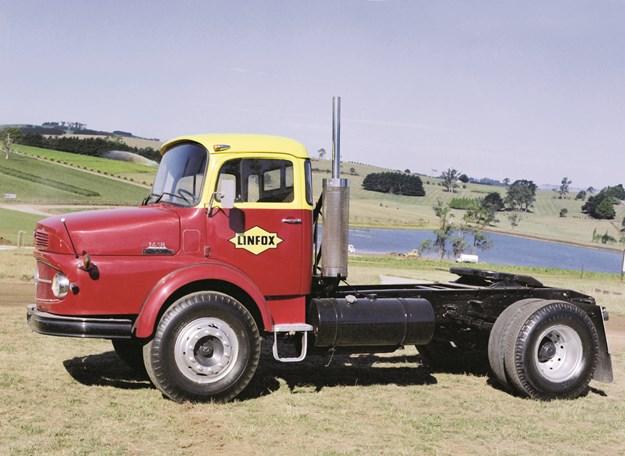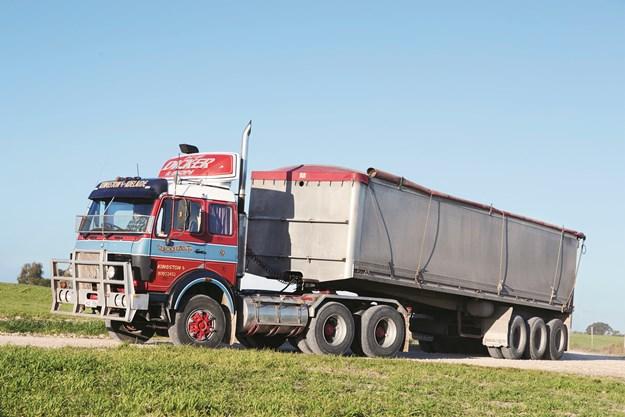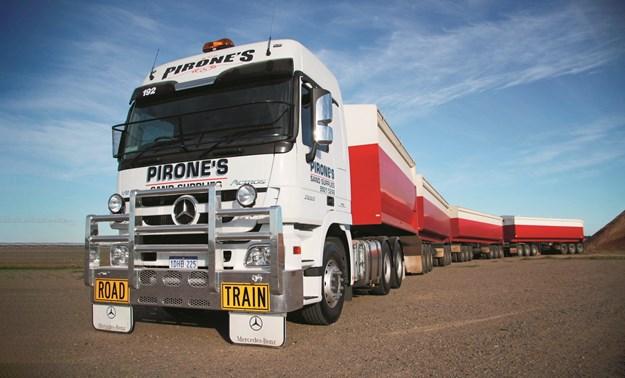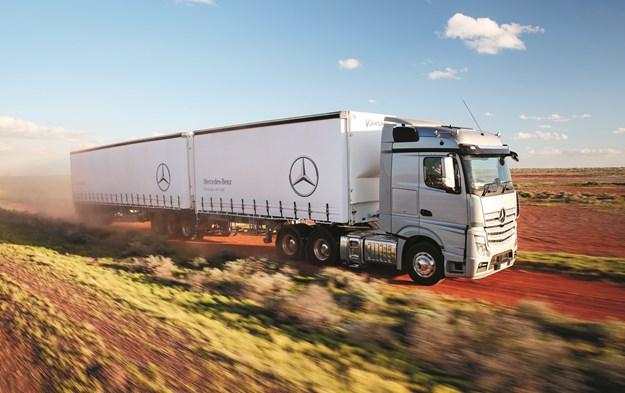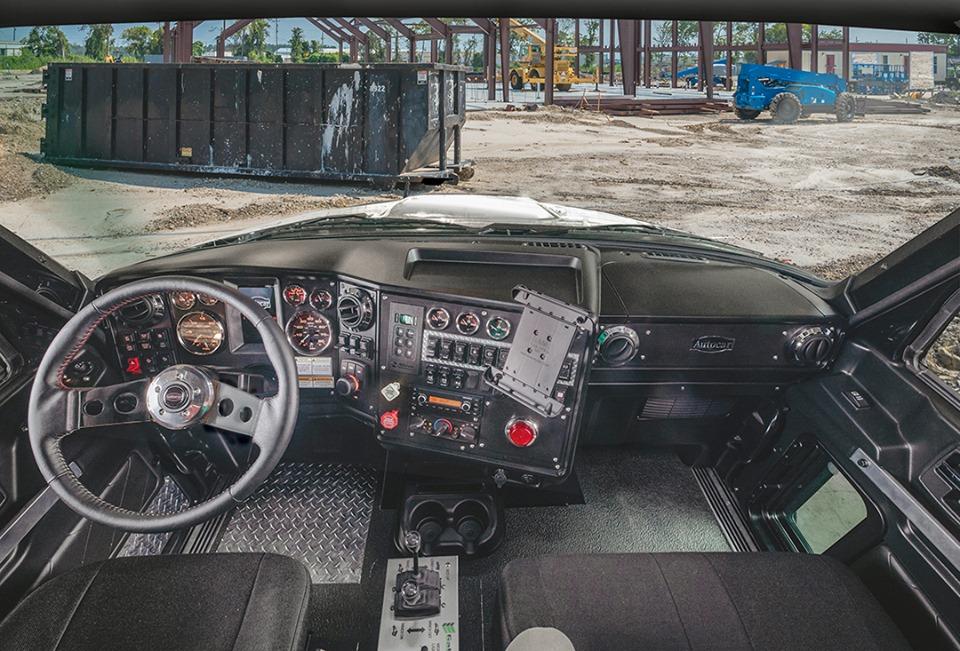
kscarbel2
Moderator-
Posts
18,868 -
Joined
-
Days Won
114
Content Type
Profiles
Forums
Gallery
Events
Blogs
BMT Wiki
Collections
Store
Everything posted by kscarbel2
-
Family day for Kenworth Truck Company. The World’s Best Truck built by the World’s Best People. #kenworth #worldsbesttruck #familyday .
-
The Autocar AT64F: The Legend. King of the Road. And this one is Cat-powered, too. But, it's just one of the Autocar trucks featured in the collection of G. Lopes Construction. Check it out on http://dailydieseldose.com/autocar-mondays-g-lopes-collection/ Nice work, Ryan Pedone. #AutocarAT64 Always Up - Autocar Trucks .
-
Thank you Potomac Disposal and congratulations on your new Hercules Front Loader. Great job EZ Pack! EZPackStrong! Always Up - Autocar Trucks .
-
For the applications of the short nose models, the X12 is all the engine people need. The longer nose model will have the X15. I heard some upscale hotel managers in Paris are looking for you, saying you pulled a Joe Walsh in some rooms.
-
I suggest that you ask your Mack brand dealer to quote you on an in-frame overhaul.
-
I hear you.......but still it’s beginning to grow on me.
-
The Autocar website now includes the all-new DC-64 conventional cab (bonneted) truck line-up. https://www.autocartruck.com/dc/ Introducing......the DC-64M mixer chassis https://d3w5dxa1iffln.cloudfront.net/media/1493/dc-64m-spec-sheet-2019-6.pdf .
-
Paul, I just recently read this article. https://www.theguardian.com/australia-news/2019/aug/11/recalling-the-horror-of-long-tan-i-was-too-bloody-busy-to-be-frightened
-
Diesel News Australia / August 2019 The globalisation of the truck manufacturing industry is leading to improvements in the level of technology available in a new generation of Japanese prime movers. Now it is the turn for Fuso to come up with a heavy duty prime mover loaded with European sophistication, Diesel News takes a prototype for a drive. It has been a long process as the global giants in truck manufacturing have integrated the various offerings they have available on different continents. Basic technology and trucks have gradually, over the last 20 years, changed from geographically diverse components in trucks to those which are adapted from a basic global platform to suit local conditions. One of those global truck manufacturers is Daimler, which has developed a series of global platforms in engine, transmission and axles. The first project to come to fruition was the heavy duty engine, known variously as the Detroit DD range and the Mercedes-Benz OM range, and now as the Fuso heavy duty engine. Another trend amongst these worldwide truck makers is the decision to retain the heavier 13- and 15-litre engines for the European and US-based trucks the companies produce and specify smaller heavy duty engines around 11-litre for product coming out of Japan. We have seen this from the Volvo Group with the UD Quon appearing with an 11-litre as the top power option and the new generation of Fuso heavy duty truck will also use the 11 litre engine in the Heavy Duty Engine Platform (HDEP) as the power plant. Another trend, which the Daimler Trucks organisation in Australia seems to have decided upon is the testing of vehicles in plain sight, rather than the highly secretive testing regimes favoured by both truck and car makers. It all started with the introduction of the new generation of Mercedes Benz trucks back in 2016. The all new Benz had been released in Europe in 2012 and was a radical redesign of cabin and driveline, moving from V6 and V8 engines to the straight six HDEP style. This meant the new driveline couldn’t be tested here with the old cabin above it. The engine just wouldn’t fit. Daimler bit the bullet and carried out the evaluation phase for the new models with trucks which were clearly identifiable as different with a matt black wrap to disguise some of the cabin shape and clearly marked ‘Evaluation Vehicle’. By tying this project in with the marketing build up to the launch of the new truck, Benz gained valuable eyeballs in the run up to the launch and considerable traction in the truck market. This was followed by the Freightliner Cascadia, another truck which had been on sale elsewhere in the world for some time, in fact, since 2009. The testing in plain sight has been even more obvious with decision to paint the evaluation vehicles in a blue camouflage style, which makes them very obvious when seen out on the highway. The first two are also left hand drive making them even more visible. The actual trucks are expected to be launched sometime next year. So, when Daimler decided to run an evaluation program for the next generation of heavy duty trucks from Fuso, the obvious thing to do was to make the new prototypes even more obvious. The camouflage style artwork chosen by Fuso is even brighter and even more instantly recognisable than the Cascadia. The bright reds and blues mean anyone can see this is a very different truck from a mile off. In fact, visually the new truck doesn’t look much different to the current Fuso heavies and could be run in an evaluation program on the roads of Australia and not attract any attention as being something different. This tells us the ‘camouflage’ is not any form of disguise in this particular case, but more a component of the prelaunch marketing program for the new truck. .
-
Trade Trucks Australia / August 8, 2019 Heavy-duty trucks wearing the three-pointed star are once again a common sight on Australian roads. The latest generation of big Mercedes-Benz trucks has been a sales hit since they arrived in late 2016, reminding many of just how popular the brand has been. FIRST SIGHTINGS Australians have had a long relationship with Mercedes-Benz trucks dating back to the early 1950s when trucks were assembled in Melbourne from CKD kits sent from Germany. Local assembly of Mercedes-Benz trucks was carried out in four different locations over the years, including a line on the grounds of the current Daimler Truck and Bus Australia Pacific head office in Mulgrave, Victoria. The truck that would really put Mercedes-Benz on the map in Australia was the 1418 (see separate story on page x) that was introduced in 1965. There are several prominent Australian transport operators who built their businesses with the help of the tough and efficient LS 1418. Even though production ceased in 1978, you can still find 1418s working hard to this day at some operations, often as a yard tug. Mercedes-Benz moved to the ‘forward-control’ LPS 1418 in 1968. This is the first of the cab-over models that would come to dominate European roads and become the go-to truck for many operators in Australia. A newspaper ad from the time boasted of 205hp (153kW) from the OM346 direct-injection diesel and had a price of just $13,608 including tax. Sounds like a good deal! Cab-over NG models would follow from 1975, joining the rugged bonneted 911; while the SK was introduced in 1989. The SK became the first truck sold in Australia fitted with anti-skid brakes as standard. You can still see many of the NG and SK Mercedes-Benz trucks working away today. Indeed, veteran truck driver Howard Dicker still gets behind the wheel of his 2233 SK Mercedes-Benz to haul material for his family’s company in Kingston, South Australia. It has done some 3.5 million km and Howard reckons its sits on the road beautifully. NEW STARS RISING The new Actros was introduced in Europe in 1995 and arrived in Australia in 1998. It was an advanced truck with a range of clever innovations, including a lightweight frame, electronic brakes as standard, ventilated discs all round, a CAN bus electrical system and an aerodynamically designed cab. There was also a Telligent three-pedal transmission that pre-selected the synchromesh. Mercedes-Benz also introduced an all-new family of V6 and V8 engines that delivered impressive fuel economy and performance. Unfortunately, the engineers pushed the engines too hard and there were some frustrating engine failures initially. Mercedes-Benz had not been able to undertake local testing of the truck, so it had not been aware of potential issues. The company worked hard to keep customers moving and its engineers vowed to never introduce a new model without a significant local testing program. A raft of changes was made and the greatly improved and vastly more durable second-generation Actros arrived in Australia in 2007. This model did much to win back customers for the brand with an offering of both Euro 4 and Euro 5 engines that arrived well before that emission standard was mandated by the federal government. The new model was also made available with the revolutionary active brake assist (ABA), which used radar to detect a moving object in front of the truck and automatically hit the brakes. It also introduced the Powershift 1 automated manual transmission with constant mesh, which was a two-pedal system. In 2009, the first SLT heavy hauler arrived in Australia with a 250-tonne plus weight rating and three of them were used a mega construction job in the mining industry. NEW GENERATION The following year saw the introduction of the third-generation Actros, which introduced the Euro 5 EEV (enhanced environmental vehicle) emission rating (even cleaner than Euro 5). Mercedes-Benz continued with its safety push with electronic stability control introduced as standard on all 6x4 prime movers; while the latest generation of ABA was also offered. Another ABA upgrade followed in 2012 and there were some minor changes, such as hypoid axle options on particular models, which delivered excellent fuel economy. A heavy-haul SLT version was also offered, now with a smart turbo clutch, and several were dispatched to construction sites and mining sites in remote parts of Australia. By now, the Actros was seen as a solid bet. The niggles had been ironed out long ago and the truck was well suited but there were holes in the line-up that would not be filled until the new truck arrived here. Over in Europe, Mercedes-Benz was already selling the all-new Actros. Introduced there in mid-2011, it represented a huge step forward over the existing truck. The V6 and V8 engines were gone, replaced by a whole new family of in-line six-cylinder engines, while improved AMT transmissions were introduced along with new interiors. The truck sported a dramatic new design language, which was both aggressive and aerodynamic. It also rode so much better than the previous model, sitting solidly even over the bumpiest roads. The new model represented a big jump over the existing product, much like the new Actros had when it first arrived here. Mercedes-Benz Australia resisted the urge to bring the truck to Australia straight away and decided to instead wait until it could be sure that it could get the right specification truck for Australia. Then it invested in an 18-month local evaluation program involving 35 customers, 20 trucks and well over one million km travelled in trucks wearing a matt-black wrap. This would enable the Mercedes-Benz team to make sure the technology was up to the job and also make sure the specification selected was exactly what Australian customers wanted. The Australian team worked on locally-developed long-range fuel tanks that would suit the truck but also deliver adequate range required by local operators. An Australian inner-sprung mattress was selected, a local-developed information/entertainment system was tested and bull bars were evaluated to make sure they worked with the new integrated safety systems. In October 2016, Mercedes-Benz was finally ready to launch the new Mercedes-Benz truck range. The Actros name was not used locally, with the team focusing instead on the numbers that had long been a part of the naming pattern. That means, for example, that the 2663 is a 26-tonne rated truck, with 63 indicating it generates 630hp (470kW). It was an immediate success and Mercedes-Benz had delivered the right truck at the right time with the power, efficiency and safety that its customers had been waiting for. The high-performance 13-litre 530hp (395kW) 2653 was one of the most popular models early on thanks to its remarkable fuel economy; while the 16-litre engine, which cranked out up to 630hp, was also winning a lot of friends. Mercedes-Benz introduced the new truck with Euro 6 across the entire range, not just specific models, and operators found the new truck not only delivered fuel economy savings over the previous model, but also used less AdBlue. Word soon spread about the fuel efficiency of the new Mercedes-Benz truck and it started attracting customers from other European manufacturers as well as operators who had always purchased traditional bonneted trucks but were willing to give the Mercedes-Benz a go because it was so economical. The new truck soon broke sales records to become the most popular Mercedes-Benz truck in Australia ever, which is quite something given the success of the mighty 1418. Mercedes-Benz offered a free scheduled servicing offer on most new-generation trucks, which could well still be active on many of the used trucks currently available. The ‘Best Basic’ coverage is tied to the truck, not the customer, and covered the trucks for 500,000km or five years (whichever came first). Mercedes-Benz is now looking to introduce further improvements to keep its truck out the front of the pack including cameras to replace traditional mirrors to increase visibility and cut Heavy-duty trucks wearing the three-pointed star are once again a common sight on Australian roads. The latest generation of big Mercedes-Benz trucks has been a sales hit since they arrived in late 2016, reminding many of just how popular the brand has been. .
-
Diesel News Australia / August 2019 There’s a new heavy duty brand in town and from a new source country, South Korea. On first impressions, people might be surprised by the sophistication of the new Hyundai Xcient prime mover which has recently arrived from South Korea. The design suggests the Hyundai team has been closely examining top of the range European prime movers and it seems to have done a good job. This is a spacious, comfortable and well built cabin, coupled with an effective driveline. A batch of production trucks have arrived and are touring the country’s small band of Hyundai truck dealers. This is not a big splash launch, this is a ‘bring the trucks into the country and let people touch and feel the new product’ campaign for customers to see what they think. Hyundai have been active here in Australia for some time, but at the lower end of the GVM scale. The current models being offered come in at 4.5 or or 6.5 times GVM. They are the kind of light duty truck we have seen arriving from many Asian manufacturers. They have had some success, so far this year Hyundai has recorded 62 truck sales, according to the figures published by the Truck Industry Council on a monthly basis. This is not earth shattering but at least the brand has been able to bother the scorers. The new Xcient prime mover is something completely out of the box. It is a full blown European-style cabover prime mover with a 520 hp Engine coupled with the tried and tested ZF ASTronic automated manual transmission, including an effective four stage retarder. Diesel News took the opportunity to test drive this new heavy duty brand in town and put it through its paces on the roads of Southeast Queensland. The tests that included an ascent and descent of the arduous Cunningham’s Gap. It is on climbs this where you can demonstrate the true mettle of a driveline, the quality of the power, torque and retardation available from the Hyundai engine.
-
Owner-Driver / August 6, 2019 Trevor and Phyllis Davies share a mutual love for the rare and rarely seen Mercedes Benz 1418. And they now have three 1418’s in their collection, including this beautifully restored 1972 model named ‘Thelma-May’ Hindsight is a wonderful thing isn’t it. It allows us to look back and judge the choices of those before us with an air of superiority. We can be especially judgemental when it comes to aesthetic choices. When it comes to the 1970s there are many things we can shake our head in bewilderment at: bell-bottom jeans, flower power, lava lamps, even afros, though I do believe tube tops were invented then and there are very few complaints about them! Another immediately recognisable symbol of the 1970s that cops a fair bit of flak for its out-there appearance is the bulging bonnet of a big 1418 Mercedes Benz. The unmistakable front end of the 1418 may have given it a face that only a mother could love, but the fact is the early Benz’s were a staple of the Australian transport industry. Mercedes garnered a real foothold in the Australian market with the 1418 when it landed on local shores in the late ‘60s and early ‘70s. Even though they were only packing 180hp they surprised more than a few with their reliability and strength. There were even a few spotted doing the truck-breaking run between Adelaide and Darwin with double road trains in tow, on roads a lot less sophisticated than the 1418s were at the time. Another feature that seems to make the early-model Mercedes unique, the 1418 and 1419s in particular, is there are very few of us older truckies (yes, I remember the days of changing spider rims and before cell phones so I’m in the older bracket now) that haven’t got at least one or two memories directly related to our Mercedes’ experiences. It is a truck that seems to have played a role in the development of many companies and many people; from big companies to small operators like the team we are looking at today – Trevor and Phyllis Davies. For those involved in the heritage truck scene, Trevor and Phyllis will be two extremely familiar names. Trevor is the president and Phyllis the secretary of the Heritage Truck Association Australia Inc. In fact, Trevor is known as ‘The Voice of the Show’ for the work he does running commentary at as many of the Heritage Association shows that the couple get to. What got the couple involved in the association in the first place was a mutual love of the aforementioned Mercedes Benz 1418. The couple unintentionally now have three 1418 Mercedes Benz in their collection, four if you count the poor blue girl sitting in the paddock supplying parts. The couple have a 1972 1418 named ‘Thelma-May’; a 1974 1418 called ‘Gracie’; and a yet-to-be-named 1977 1418. The Davies family affiliation with the trucks stems from both Trevor’s and Phyllis’ lineage. Though Phyllis has only had her HR license for the past seven years, her life has revolved around the transport industry. With her entire family being involved, it was only natural that she would enter the industry at a young age and stick with it. Phyllis’ Mercedes crush stems back to her dad who owned several 1418s himself. Technically, ‘Thelma-May’ is Phyllis’ truck and it is in the same colours as her dad’s original 1418. Trevor’s Mercedes Benz crush goes back almost as far, to his early working days when he purchased a 1418 for his first interstate truck. Trevor had worked as a subbie for Simons Transport and the regular work had him all over Australia. "His sister helped pay the rego," Phyllis tells me, "and his mum would pack a lunch box full of sandwiches and off he’d go." The 1418 become the building block for Trevor’s long and successful owner-driver career. Though the 1418 would be replaced with a 3070 International and then an S-line, it would always be a special truck. So much so that when Trevor chose to leave the owner-driver life, he and Phyllis decided to hunt one out to purchase. That decision led them to ‘Gracie’, the 1974 1418. It was no easy feat though. The couple had actually been touring around Australia looking for a 1418 for a while. It seemed every time they heard of one for sale they arrived just after the truck had been snapped up. Fate has a way of intervening with these kinds of things though and it just so happened that Trevor and Phyllis were visiting the Mt Gravatt Show in Brisbane when it was announced over by the in-field commentary team that Roy Thompson was looking to sell his immaculate 1418. Before he’d even put the microphone down Phyllis had sent Trevor over to lock up the deal. Within the week ‘Gracie’ was in the Davies’ shed. The truck was already in exceptional condition. Roy Thompson was the truck’s third owner and used it to cart his restored Dennis trucks around to shows. The name ‘Gracie’ came from the previous owner Ian Chapman, who bought the truck to cart machinery around. He set it up with the deck and ramps and admitted the cost of the truck and the work it did meant the truck became his saving grace, hence she became known as ‘Gracie’. There wasn’t much that was needed to be done to ‘Gracie’ as Roy had kept it immaculate. Trevor did replace the diffs and a few other little jobs to keep it in top condition. His plan to get a bull bar for ‘Gracie’ would be the decision that would result in Phyllis getting her own 1418, ‘Thelma-May’. A quick side note: with the purchase of ‘Gracie’ came the introduction to the Heritage Truck Association. Trevor and Phyllis both joined as a way to meet and learn from like-minded truck enthusiasts. It was one of the friends they met there that happened to phone Phyllis up one day in 2013 and point out that there was a 1418 being used as a garden ornament down in Jimboomba that had a perfect bull bar on it. Trevor and Phyllis took ‘Gracie’ down to ‘stiff-bar’ the old girl out of a paddock and onto the back of a friend’s transporter. When the truck was dropped in at their property another good friend and expert in truck restoration, Ron Toy, had a look over and declared: "It’s in good nick, it wouldn’t be hard to fix up." At this suggestion Trevor lost the bull bar and Phyllis vowed this would be her truck. So began the restoration of ‘Thelma-May’. The single-drive 1972 1418 they had rescued from paddock life had been used as a water truck for a construction company in Pimpama, south of Brisbane. Most of the truck was in good condition with the exception of several holes in the back of the cab where people had drilled randomly to affix different equipment. "It looked like it had been shot with a machine gun," Phyllis says. At the end of its water truck days it had been sold to another Mercedes fan in Adelaide; unfortunately that gentleman passed away suddenly and the truck ended up out to pasture on his daughter’s Jimboomba property. The timing of the purchase of ‘Thelma-May’ coincided with Trevor having some time off the road with a shoulder injury so it was a perfect project for the Davies family. Trevor and Phyllis spent the next 12 months removing all of the rusted-out pieces, all of the bolted-on extras and ripping out the dilapidated interior. Phyllis laughs as she recalls the family effort that went into fixing the dashboard wiring. "Trevor had the bonnet off and was on that side, our daughter Sonya and I were inside sticking labels to each wire, left hand indicator, right hand indicator, it was a mess!" Trevor took care of the mechanical side of the old girl. Though in true testament to the longevity of the Mercedes motors the old 1418 still fired up after nearly five years sitting in a paddock. "I got covered in a lot of black when she started up," Phyllis laughs. It did fire up though. Trevor gave it a full work over during its tear-down stage. Once all the rusted and unwanted extras had been removed the truck was sent off to another friend who repainted the cab in the new Caterpillar yellow, with its original white guards and bull bar. The interior had been rewired and then new upholstery fitted. A little extra sound proofing was added around the firewall and all the original gauges reinstalled. "The hardest part was finding the little warning lights," Phyllis admits, referring to the lights that sit just above the rear of each door. The advantage of being members of the Heritage Association really came to the forefront when undertaking projects like the one Trevor and Phyllis were into. "There’s always someone who knows someone or has tried something that will help," Phyllis says. Though she does admit a lot of the expertise and knowledge around some of Australia’s iconic trucks is being lost as the old timers pass on. In a little under 12 months ‘Thelma-May’ (Thelma is Phyllis’ mother’s name and May her middle name) had gone from a slowly deteriorating garden ornament to a revitalised iconic Aussie truck. The care and precision that Trevor and Phyllis took in restoring her show the passion they have for the 1418s. Since it’s restoration they have added a third 1418 to their collection, ‘Albert Charles’ (named after Trevor’s father), a 1977 model. This one was actually a New Zealand truck that had been sold to a steel company in Sydney. It was used there to cart coils of steel to the rail sidings. The heavy work took its toll, with the chassis having to be welded together after snapping, but the sturdy Mercedes running gear is still in top notch condition. The 1418 Mercedes Benz is a truck that’s played a major role in Australia’s transport history and preserving that history is just as important. It’s because of people like Trevor and Phyllis Davies – as well as the Heritage Truck Association – and all the work they put in that we can all enjoy the view of these classics. In particular, the rather rare and rarely seen, 1418 Mercedes Benz. Photo gallery - https://www.ownerdriver.com.au/industry-news/1908/70s-star
-
Scania Australia Press Release / August 11, 2019 Scania celebrates 50 years of the legendary V8. https://www.scania.com/group/en/section/solutions/trucks/v8/ .
-
Navistar launches new truck: The International LT Series
kscarbel2 replied to kscarbel2's topic in Trucking News
The LT is a major upgrade to the ProStar, no doubt about it. But that said, I still prefer the appearance of the now discontinued ProStar-based Australian market Caterpillar truck range......and the CAT C15 engine it was available with. (B-doubles, aka. B-trains and interlinks...........why can't the US government see the light?) . . . . -
RT / August 17, 2019 The United States has cut Pakistan’s foreign aid by $440 million, sending mixed signals as President Trump seeks mediation between New Delhi and Islamabad over the crisis in Kashmir. The aid reduction means that Pakistan will receive $4.1 billion, slightly over half of the total amount promised by Washington nine years ago. The aid package, originally set at $7.5 billion under the Kerry Lugar Berman Act, was implemented in 2010, but a breakdown in US-Pakistan relations has delayed the distribution of funds.
-
The all-new Autocar DC-64R has the most productive and comfortable vocational cab. Period. Its huge operator space gives enough room for the big XXXL guys, but it’s also laid out to be comfortable for smaller men and women too. Every gauge is easily visible and every switch falls under your hand. Check it all out on Autocar's website: https://zcu.io/L8mN #AlwaysUp #AutocarDC Always Up - Autocar Trucks .
-
Volvo Introduces Enhanced Turbo Compounding for D13 Diesel
kscarbel2 replied to kscarbel2's topic in Trucking News
Remember, with anything that Volvo does, Scania did it first........and Scania did it better. -
Volvo Introduces Enhanced Turbo Compounding for D13 Diesel
kscarbel2 posted a topic in Trucking News
Heavy Duty Trucking (HDT) / August 16, 2019 Volvo Trucks North America is introducing the next generation of its turbo compound technology, providing up to an additional 3% improvement in fuel efficiency over the current 13L turbo-compound engine, the D13TC. This new engine delivers up to 11% fuel savings overall compared to model-year 2015 trucks, Volvo said. Volvo announced other improvements for the next-generation D13 as well, including enhanced efficiency over a wider range of applications, more engine ratings, and a new EE Extra Efficiency drive mode. The new D13TC will be available for order in the fourth quarter of 2019 and go into production at the end of the first quarter of 2020. “We developed our first generation of the Turbo Compound engine in 2017, and since then almost 300 million miles have been logged, validating the up to 8% fuel-savings benefits,” said John Moore, product marketing manager at Volvo Trucks North America. “This new D13TC builds upon this game-changing engine technology, further increasing fuel efficiency by up to 3% over the current D13TC engine, saving approximately $1,200 per year per truck, based on the average fuel price and 125,000 miles per year.” Volvo Trucks’ new D13TC offers three individual drive modes, Dynamic Torque, an additional 405-hp rating, and the next evolution of the Volvo Trucks’ patented wave piston design. These updates enable further-increased fuel efficiency over a wider range of loads, vehicle speeds and engine rpm. This offers a broader use of applications compared to the first generation of the D13TC engine, which was designed specifically for over-the-road, long-haul applications for trucks loaded at 80,000 pounds. The three individual drive modes available with the new D13TC engine are Extra Efficiency, Economy, and Performance. These modes will allow the driver to better optimize fuel efficiency for the vehicle with desired performance, depending on application, topography and driving conditions. This new engine also features a wider rpm efficiency band, which enables top fuel efficiency for longer periods of time. Volvo describes Dynamic Torque as an incremental torque system designed to provide the right torque at the right time. Rather than operating in silos of high-torque and low-torque modes, Dynamic Torque automatically sets a torque level dependent upon the weight of the truck, the grade, and the road conditions at any given time. Dynamic Torque also features an automatic 12th gear lockout on heavy loads with Adaptive Gearing engine ratings. A kick-down switch along with performance drive mode allow access to full torque for customers requiring it on demand. This simpler, more effective system on the new D13TC engine will provide an even more consistent improvement in fuel efficiency across different applications, enabling customers to cut costs on a wider range of operations, Volvo said. The new engine also features a revised wave piston, designed and patented by Volvo Trucks. The improved design optimizes wave technology to evenly distribute the air/fuel mixture in the cylinder, burning the fuel more consistently than a traditional piston. Volvo’s design increases the compression ratio from 17:1 to 18:1 while maintaining up to a 90% reduction of soot in the cylinder, further improving fuel efficiency in the engine. “The individual drive modes allow drivers new heights in fuel efficiency without sacrificing performance. We are also taking it to the next level with a simpler torque package that delivers the right torque at the right time,” said Moore. “Not only is it cutting edge when it comes to sustainable use of diesel in the transportation industry, but it is the most fuel-efficient Volvo engine on the market for our customers, with trucks running cleaner at a reduced cost.” . -
Fleet Owner / August 13, 2019 Volvo Trucks North America (VTNA) has recalled 25,000 VAH, VHD, VNL, and VNR model vehicles manufactured from July 2, 2018 through March 28, 2019 for a defect affecting the torque applied to the t-bolt clasps on the transmission auxiliary air tank straps, according to a report by the National Highway Traffic Safety Administration (NHTSA). The report states that the straps may have been over-torqued, potentially causing deformation to the strap where the t-bolt is anchored. This defect may cause the tank to drop to the ground, releasing debris on the road and presenting a safety risk to other drivers. According to the report by NHTSA, Volvo has not received any reports of vehicle crashes as a result of the defect but is taking all necessary measures, assuring the air tank strap will be inspected and replaced if damaged.
-
Transport Topics / August 13, 2019 A notable shift in the types of transmissions used in fleets’ Class 8 trucks has occurred over the past five years. Manual transmissions reigned as king among fleets and seasoned truck drivers for decades, but they now represent a minority that is rapidly shrinking. NFI recently converted nearly its entire 2,600-vehicle fleet to automated manual transmissions. “We started the transition at end of 2014, into 2015, and then made it standard in our fleet,” said Bill Bliem, NFI senior vice president of fleet services. “We probably have less than 10 [manuals] now.” Camden, N.J.-based NFI ranks No. 19 on the Transport Topics Top 100 list of the largest for-hire carriers in North America. That’s around the time Ozark Motor Lines expanded its use of AMTs. It put five units into service for testing in December 2013, purchased 10 more in 2014 and started to convert the entire fleet by March 2015. This year, the company will come close to finishing the process. “I wish we had started converting the fleet a little sooner,” said Glen McDonald, director of maintenance at Ozark. “We really like them.” NACFE estimates fleets experience 1-3% fuel economy gains with AMTs compared with manual transmissions. Automated manuals mimic the practices of the best manual drivers, thus evening out performance across a fleet and eliminating less-efficient shifting. AMTs took a while to catch on but now have become the norm because of their advantages in the over-the-road tractor market, Roeth said. Fleets and manufacturers report that AMTs officially have replaced manual as the standard transmission option. “We’re seeing increased fuel economy, lower maintenance costs and happier drivers,” NFI’s Bliem said. Replicating best shifting practices reduces the necessary maintenance due to less stress and wear on the clutch and other shifting components. Fleets also report reduced driveline failures and tire wear. Maintenance costs “absolutely have gone down,” Ozark’s McDonald said. “Before, the driver would push the accelerator and [the transmission] would give them what they asked for. Now when they push it, the engine and the transmission talk and give them what they need.” In addition, across the board, those in the industry cite driver recruiting and retention as a key benefit of converting from manual transmissions to AMTs, an especially important factor amid a driver shortage. Younger drivers, in particular, are drawn to AMTs because they have less experience with manual transmissions when they enter the industry due to the prevalence of automatic transmissions in personal vehicles. Even truck driving schools are embracing the shift. “A lot of the schools are training on automated transmissions instead of manuals now,” said Steve Sichterman, vice president of client services for Conversion Interactive Agency. “They’re hiring drivers that actually have automatic transmission-only endorsements on their CDLs.” Engine and transmission connectivity is “another big deal” that’s driving AMT adoption, said Ashley Murickan, product marketing manager at Volvo. “Many fleets and OEMs are going to complete integrated solutions. Engines and transmissions are usually offered as an integrated solution.” Volvo incorporates its proprietary I-Shift AMT into its vehicles. The company is on its third iteration of the I-Shift. Because the same engineers design Volvo’s engines and transmissions, the two have seamless communication. “This transmission knows the engine-efficiency maps and predicts all the best shift points all the time,” Murickan said. For example, in models with an active driver-assist collision mitigation system, the transmission will downshift by itself when the system detects the potential for a collision. “If you were driving a manual transmission, it might not necessarily be the case that you would downshift because you’re concentrating on braking the vehicle,” Murickan said. Eaton Cummins also integrates predictive features into its transmissions. For example, its predictive cruise control system allows for better shifting decisions when a vehicle climbs a grade. “Essentially, the transmissions are able to see the road ahead and make a decision about what’s coming,” said Charles Ganske, product strategy manager at Eaton Cummins. “You wouldn’t have that in a manual and the driver would have to do that themselves, so it’s definitely an improvement from a drivability standpoint.” Eaton Cummins introduced the Endurant AMT in 2017 and recently expanded some of its features. Endurant is available in Paccar and Navistar vehicles, with plans to expand to additional OEMs. And when it comes to driver recruiting, fleets use AMTs as a selling point because they are easier to use and less strenuous for drivers. The less physical nature of shifting reduces driver fatigue and allows drivers to work later in life. It also opens the profession to people who might possess less strength, such as women or a person suffering from an injury. As is often the case when transitioning from manual transmissions to AMTs, management at NFI and Ozark initially experienced pushback from seasoned drivers who believed manuals are better and safer. But acceptance at both companies happened quickly when drivers tried AMTs. NFI’s Bliem said drivers now like AMTs so much that they don’t want to give one up and resort to a manual if a truck must go out of service for maintenance. Both businesses also found AMTs to be as safe as manuals, even in snowy or icy conditions. Although AMTs have experienced significant growth, torque converter automatics — often referred to as fully automatic transmissions — have made more modest gains. Some in the industry, such as Volvo’s Murickan, suggest the sector has reached a plateau. About 1% of Volvo’s transmissions are automatics. Estimates for torque converter automatic penetration across the trucking industry vary but generally hover around less than 10%. Allison Transmission is the main company offering fully automatic transmissions for OTR trucking in the U.S. It does not offer AMTs or manual options, only torque converter automatics. The company reported a 4% net sales increase in this year’s second quarter compared with the second quarter of 2018. It recently announced the introduction of a medium-duty 9-speed transmission, which builds on the fuel efficiency, performance and durability of the 6-speed model. “We believe very strongly there are benefits to having this power shift capability,” said Richard Price, Allison Transmission’s executive director of Customer Integration and Application Engineering. “The torque converter allows a fluid coupling in the drive line. As such, we’re able to use that fluid coupling for very fine maneuvering at low speeds.” In Class 8 trucks, that means better maneuvering with automatics than with AMTs when backing toward a trailer or loading dock. NFI, for example, initially experienced issues with trailers jumping while backing after switching to AMTs, and drivers had to adjust their operating procedures. Torque converters also take full engine torque to help launch a vehicle, Price said. “If you have to come to a stop on a hill, your chances of getting started with an automatic are much better than with a manual or AMT.” Industry analysts suggest the growth in automatics primarily lies in the vocational sector, such as garbage trucks, fire trucks or construction vehicles. OTR trucking has not necessarily experienced the same adoption rate because automatics’ efficiency and other benefits are more evident in stop-and-start work environments. While some analysts point to automatics’ slightly higher efficiency, AMTs tend to be lighter, which aids fuel efficiency. Volvo estimates its AMT is about 100 pounds lighter than a fully automatic. Weight reduction is one thing Allison is working on with its automatics, Price said. Fleets don’t necessarily believe the benefits outweigh the increased up-front cost of an automatic compared with an AMT, which tends to be several thousand dollars. Although AMTs still cost more than manuals, fleets experience better value for AMT trade-ins. That’s a stark change from a few years ago when AMTs were viewed as a liability on the back end. “The value is now built into it,” Ozark’s McDonald said. “That tells me the secondary buyer is interested in [AMTs], too.” Despite AMTs’ higher initial cost compared with manuals, motor carriers find them more valuable in the long run. “It’s a balancing act. If you know you need to hire more drivers and this is something that’s going to attract them, it’s an investment rather than a price point, particularly with the larger fleets,” said Sichterman, of Conversion Interactive Agency. Because of AMTs’ market success, Eaton Cummins and Volvo don’t anticipate greater expansion into torque converter automatics. Likewise, NFI and Ozark are satisfied with the performance of their AMT, and don’t expect to switch to automatics. Volvo does, however, anticipate the day is approaching when the company won’t manufacture manual transmissions anymore, Murickan said. “I think this is about the last time we’ll be talking about manuals versus AMTs,” said NACFE’s Roeth, who added that “talk of AMTs versus automatics will continue.” .
-
Trailer-Body Builders / August 16, 2019 Innovative technologies, efficient vehicles and game-changing upfit solutions have helped transform the work truck industry over the past two decades. And since 2001, The Work Truck Show, hosted by the National Truck Equipment Association (NTEA), has showcased these advancements annually, offering vocational truck fleet operators, manufacturers, dealers and equipment distributors an inside look at the latest trucks, vehicle components and equipment—all in one place. Now The Work Truck Show, North America’s largest work truck event, is preparing to celebrate its 20th anniversary March 3-6 at the Indiana Convention Center in Indianapolis IN. Educational sessions, the Green Truck Summit and the Manufacturer and Distributor Innovation Conference begin March 3, and the exhibit hall is open March 4–6. Registration opens in October, NTEA said. “We’re excited to mark the 20th anniversary of The Work Truck Show and reflect on how this event and the work truck industry have advanced over the past 20 years,” said Steve Carey, NTEA president and CEO. “The Show plays an important role in helping our industry discover innovative solutions, overcome challenges and achieve goals. “The Show’s success is the result of the commercial vehicle community’s thirst for continuous education and evolution.” Birth of the Work Truck Show NTEA—The Association for the Work Truck Industry—started producing member events a year after it was formed as Truck Equipment & Body Distributors Association (commonly called Distributors Association or D/A for short) in 1964. What started as the Sales and Marketing Conference, an event featuring sales workshops and tabletop displays, grew over the next decade into D/A Convention, the industry’s annual meeting for truck equipment distributors, body builders and suppliers. The D/A Convention tradeshow was held in hotel ballrooms with exhibitors limited to 10-foot by 10-foot booths. In 1982, the Association debuted SUPERSHOW, a biennial tradeshow that in its first year covered the Superdome field with 67,350 square feet of exhibits, including vocational trucks. As the pace of industry evolution quickened, NTEA surveyed members about their challenges. In the late 1990s, markets were consolidating, distribution channels were shifting, customer demands were changing and there were rapid developments in information technology and equipment innovation. It was time for a new, more frequent tradeshow. NTEA introduced its largest event yet, T3, The Commercial Truck, Trailer & Technology Expo, in 2000. The new show broke long-standing industry barriers by bringing together the entire commercial truck marketplace: manufacturers, distributors, dealers and end-users. T3 2000 filled 340,000 square feet with commercial trucks and equipment. A year later, to better reflect the broad scope of the annual event, NTEA debuted the name The Work Truck Show. Over the last 20 years, The Work Truck Show has continued to expand, and NTEA now calls the entire week around the show Work Truck Week. During its first decade, The Work Truck Show was held in a different city each year. By 2011, it grew too large for most convention facilities to handle, and Work Truck Week found a long-term home in centrally located Indianapolis. A look back at where the show has been: 2001: Baltimore 2002: Orlando 2003: Atlanta 2004: Baltimore 2005: Indianapolis 2006: Atlanta 2007: Indianapolis 2008: Atlanta 2009: Chicago 2010: St. Louis 2011–2019: Indianapolis Attendance and exhibit growth The Work Truck Show is nearly three times larger today than it was back in 2001, NTEA said, thanks to continuous demand from new and returning exhibitors. The number of exhibitors has grown from 350 in 2001 to more than 500 in 2019. After maxing out all available exhibit space at Indiana Convention Center, NTEA found creative ways to accommodate some of the companies on the Show’s waiting list every year. In 2019, New Exhibitor Pavilion, a dedicated space outside the main 500,000-square-foot exhibit hall, was added to showcase first-time exhibitors. Show attendance has nearly doubled since 2001, growing from 7,143 attendees to a record 14,256 at The Work Truck Show 2019. In 2007, there was limited knowledge about green technology or hybrid vehicles in the vocational truck industry. Fuel prices were on the rise, and fleet managers began to express interest in how emerging technologies could help offset fuel costs while positively affecting the environment. “Green technology in our industry at the time was basically nonexistent,” said Doyle Sumrall, NTEA managing director. “But there were a few OEMs starting to work on developing hybrid vehicles, and they were interested in sharing what they were doing with the industry. Green Truck Summit really started as a way to bring visibility to these new clean vehicle technologies and connect the developers with industry decision-makers.” What is now Green Truck Summit started off as a special session at The Work Truck Show 2007 called Hybrid Truck and Alternative Fuels Summit. Green Truck Summit has grown to become the industry’s premier alternative fuels and advanced technology conference, annually bringing together industry leaders to share developments in the journey toward greater work truck productivity and efficiency. “We literally started in 2007 with three or four vehicles in the corner,” Sumrall said. “Now we have a full day of education with OEMs, suppliers, government entities and users sharing their sustainability stories. Major announcements are being made, and new alternative fuel and advanced technology products are being introduced regularly at The Work Truck Show in conjunction with Green Truck Summit.” Over the years, manufacturers have learned The Work Truck Show is the place to introduce their latest work trucks, equipment and technology. Many new trucks and vans have made their worldwide debut on the Show floor. Hundreds of exhibitors have highlighted new products ranging from truck bodies and vocational equipment to components and power solutions in the annual New Product Spotlight. The focus of many of the products introduced at The Work Truck Show is to improve safety, reduce costs, increase efficiency and enhance fuel economy. The Work Truck Show features the latest vocational trucks, vans, vehicle components and truck equipment on an exhibit floor covering more than 500,000 square feet. The event includes a robust educational conference with sessions designed to help attendees improve their operations. Additionally, most years, a Ride-and-Drive and outside demo area offer the opportunity for attendees to get hands-on with innovative technology and new trucks. Anyone who works with commercial vehicles, including public and private truck fleet operators, manufacturers, dealers and equipment distributors can find solutions to their business challenges at the Show. For more information, visit worktruckshow.com or call 800-441-6832.
-
Trump wants to purchase Greenland from Denmark
kscarbel2 replied to kscarbel2's topic in Odds and Ends
If the US had purchase Greenland in the 1800’s (Alaska was purchased from Russia in 1867), the price would have been cheap. Truman should have made a more reasonable offer after the war. -
Dodge Trucks prices 2020 Ram EcoDiesel truck from $38,585 Automotive News / August 16, 2019 DULUTH, Minn. — Ram's 2020 EcoDiesel pickup will start below $39,000 for the base model when it launches in the fourth quarter. The third-generation EcoDiesel will be priced at $38,585, including shipping, for the two-wheel-drive Tradesman Quad Cab version. Ram said the EcoDiesel is a $4,995 option, which equates to a $3,000 premium over the 5.7-liter Hemi V-8 eTorque or $3,300 over Tradesman, Big Horn/Lone Star, Rebel and Laramie base models. The 3.0-liter V-6 EcoDiesel engine is produced at Fiat Chrysler Automobiles' Cento plant in Ferrara, Italy. In a new twist this year, Ram is making the EcoDiesel engine available on the Ram Rebel. The diesel engine produces 480 pound-feet of torque, a 14 percent increase from the previous engine. Horsepower increases 8 percent to 260 hp. Fuel economy will be announced closer to the release date. The availability of the EcoDiesel across all Ram trim classes will give the truck "a competitive advantage in the marketplace," said Mike Koval Jr., Dodge Truck director of U.S. product marketing. "From our entry-level Tradesman, all the way up to our premium Limited edition quad cab, crew cab 4X4, 4X2, our consumers will have access to that level of technology and performance and fuel efficiency across the range. We are going to speak to the entire spectrum of diesel buyers." U.S. sales of the Ram rose 28 percent in the first half, enough for the truck to surpass the Chevrolet Silverado and become the No. 2 seller in the large pickup segment. Ivan Drury, senior manager of insights for Edmunds, said having the EcoDiesel option across every Ram is "phenomenal." And he said it's a good fit in the off-road-centric Rebel. Drury said some consumers balk at paying an extra premium for a diesel engine in a high-end or specialty truck. The ability to configure the new Ram across the board creates "a huge proposition" for buyers, Drury said, and adding an off-road truck with a diesel "definitely helps."
BigMackTrucks.com
BigMackTrucks.com is a support forum for antique, classic and modern Mack Trucks! The forum is owned and maintained by Watt's Truck Center, Inc. an independent, full service Mack dealer. The forums are not affiliated with Mack Trucks, Inc.
Our Vendors and Advertisers
Thank you for your support!


